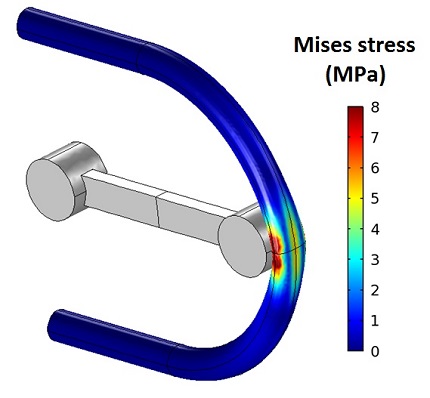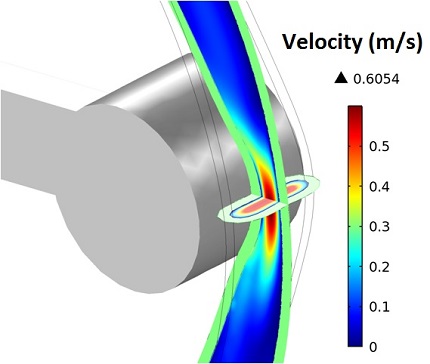Technical Challenge
Peristaltic pumps move fluid by squeezing an elastomeric tube causing the fluid inside the tube to follow the motion of the roller. They are valuable for pumping aggressive fluids that could damage or contaminate rotors or gears and for pumping delicate fluids such as blood. The performance of peristaltic pumps is influenced by tube dimensions, tube material, rotary mechanism, and fluid properties, but the interaction of these factors is not well understood.
Veryst Solution
Veryst Engineering developed multiphysics models that capture the deformation of the tube, rollers, and fluid, the fluid-structure interaction, and contact interaction between the rollers and the hose.
We used the models to investigate the effect of pump design variations such as tube occlusion, tube diameter, and roller speed, on the flow rate, flow fluctuations, and stress state on the tube, thereby improving pump performance.

